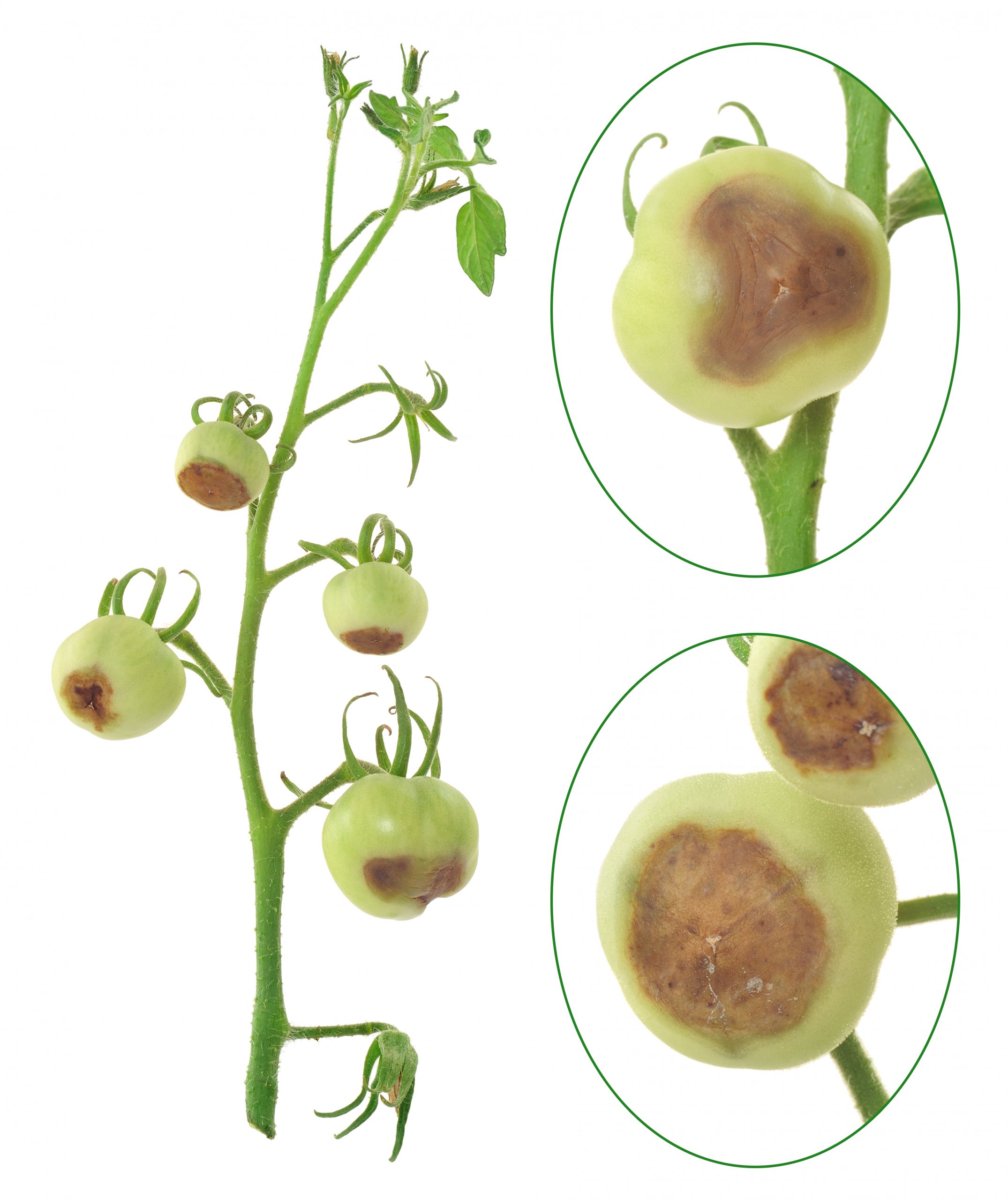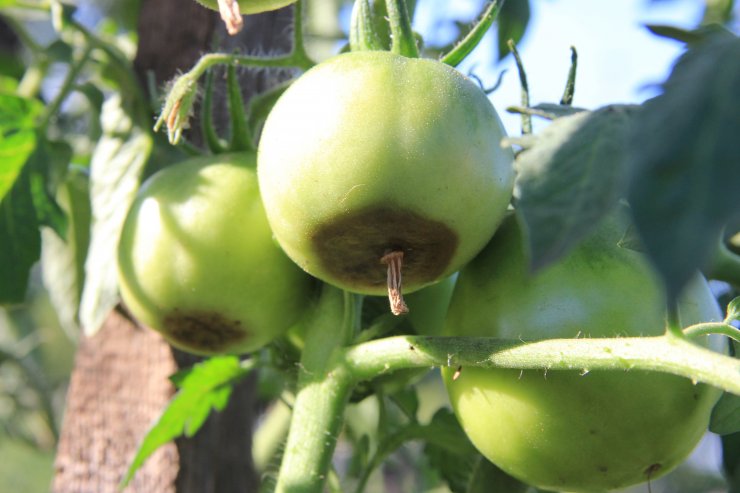
Blossom End Rot
Blossom-end rot (BER) is a common tomato problem associated with growing conditions, affecting tomato fruit. Stems and leaves will show no symptoms.
What does blossom-end rot (BER) look like?
The bottom side of the tomato (either a green or ripened one) develops a sunken, leathery dark brown or black spot. Gardeners most often notice BER when fruit is about half its full size.

A tomato suffering from Blossom End Rot, or BER
What causes BER?
Calcium imbalance in the tomato causes BER. Tomato cells need calcium to grow, and calcium binds the tomato cells together. Tomatoes absorb calcium through water, but calcium isn’t fast-moving—so, a fast-growing tomato might lack calcium absorption throughout the fruit, and BER develops.
Other conditions can hasten the development of BER, such as:
- Inconsistent watering
- Root damage
- Cold temperatures/cold soil
- Excessive heat
- Too much nitrogen in soil (which lowers the plant’s calcium intake)
- Large amount of salts in the soil (lowers the availability of calcium)
- Markedly acidic or alkaline soil (pH imbalance prevents calcium absorption)
When does blossom-end rot affect tomato plants?
Different conditions allow tomatoes to develop BER:
- Developing fruit early or mid-season, because the soil is cooler and plants have fewer roots
- When tomato fruit sets, and tomatoes need calcium to bind together cells
- When watering is inconsistent or lacking
- When temperatures are excessive—both too hot and too cold weather can interfere with water flow
- When the season starts out wet and then turns dry during fruit set, just when tomatoes need calcium the most
- When plants are grown in cold, heavy soil, which prevents strong root development
- When soil has excessive salts, which reduces calcium availability
How can you control and treat BER?
Blossom-end rot cannot be reversed on a tomato once it’s set in, but you can take these steps to slow BER or stop it:
- Preserve affected plants by applying calcium immediately. You can use products specifically developed to treat, prevent, and slow blossom-end rot in tomatoes. Or you can mix 1 tablespoon calcium chloride (sold commercially for other uses as de-icing salt) in 1 gallon of water. Spray two to three times a week until blossom end rot is under control. Apply early in the morning when temperatures are cooler.
- Pick affected fruit to reduce stress on the plant and allow it to direct its energy to other, healthier tomato fruit.
- Cut out spots on harvested fruit and eat the remaining good part. Blossom-end rot does not make the rest of the tomato inedible. However, if tomatoes have been infected by fungi or mold, discard them immediately.
How can you prevent blossom-end rot?
There are lots of ways you can take measures to prevent BER in the first place:
- Plant in an area with good drainage.
- Avoid planting too early in the season, which can expose plants to cooler temperatures and cold soil. Allow soil outside to warm up before planting.
- Work plenty of compost and organic matter into your soil before planting so that the plant’s root system has a better chance to grow strong and deep.
- Add quick-release lime when planting tomatoes, so that there’s plenty of calcium in the soil and it gets quickly absorbed. Tomatoes grow best when the soil pH is about 6.5.
- Keep the water supply for your tomato plants even throughout the season so that calcium uptake is regular. Tomatoes need about 2 inches of water a week. The plants perform best when watered deeply a couple of times a week, rather than every day watering as a matter of habit.
- Mulch plants once planted and started growing to maintain moisture levels.
- Once blossoms emerge, apply tomato fertilizer that is high in phosphorus (the second number in a fertilizer’s three-number series), like 4-12-4 or 5-20-5. Too much nitrogen (the first number in the series) or large amounts of fresh manure can prevent calcium uptake.
- Cultivate carefully around tomato plants to avoid damaging root systems. Don’t dig more than an inch or two deep around plants.
Final Note on BER: Determinate tomato varieties are more prone to BER, because they set fruit in a short period of time and can be exposed to less calcium uptake. Indeterminates tomato varieties set fruit throughout the season, making it easier for plants to regulate calcium intake.
Do your tomato plants suffer rot? Do you have any great tips about how to avoid tomato rot? Please tell us how you deal with tomato rot in your garden.


 Previous
Previous

